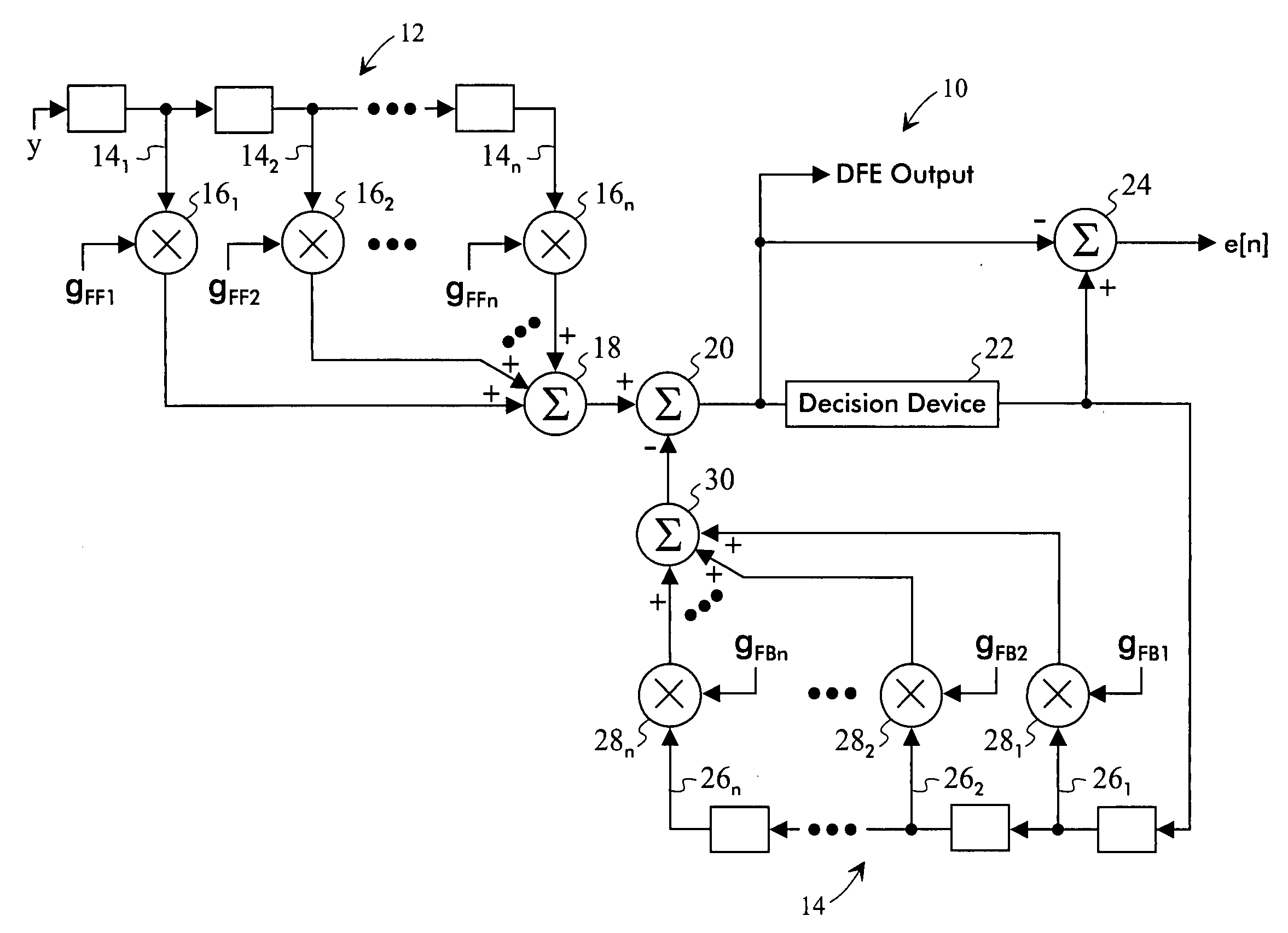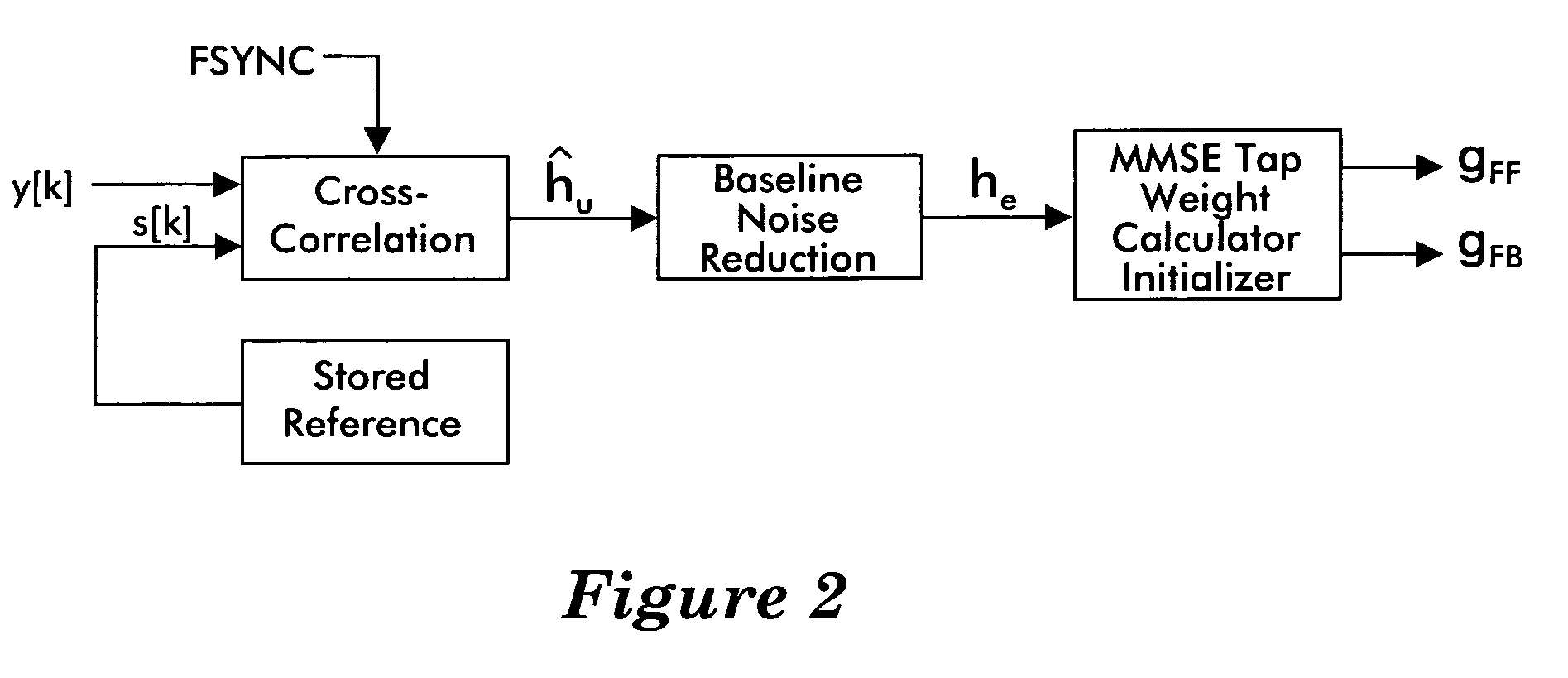Adaptive equalizer
a technology of equalizers and tap weights, applied in the field of equalizers, can solve the problems of not providing tap weights that converge to the desired values, and achieve the effect of improving accuracy
- Summary
- Abstract
- Description
- Claims
- Application Information
AI Technical Summary
Benefits of technology
Problems solved by technology
Method used
Image
Examples
Embodiment Construction
[0018] Equation (4) results in a cross-correlation vector h having L=La+Lc+1 elements. The inventors have recognized that, due to the finiteness of the correlation operation as represented by equation (4), the cross-correlation vector h is characterized by an a prior known noise component in the main path and in each reflected (ghost) path in proportion to the relative gain in each respective path. The inventors have also recognized that the vector h may be more accurately estimated by compensating for this noise component.
[0019] In general, this compensation is accomplished by deriving a representation of the noise component and by iteratively subtracting it from the main and each dominant reflected path detected in the initial (raw) channel impulse estimate, while taking advantage of a thresholding operation to allow for a reasonable termination of the iterative process.
[0020] The channel estimate h may be corrected in three steps. In the first step, the correction vector matrix...
PUM
 Login to View More
Login to View More Abstract
Description
Claims
Application Information
 Login to View More
Login to View More - R&D
- Intellectual Property
- Life Sciences
- Materials
- Tech Scout
- Unparalleled Data Quality
- Higher Quality Content
- 60% Fewer Hallucinations
Browse by: Latest US Patents, China's latest patents, Technical Efficacy Thesaurus, Application Domain, Technology Topic, Popular Technical Reports.
© 2025 PatSnap. All rights reserved.Legal|Privacy policy|Modern Slavery Act Transparency Statement|Sitemap|About US| Contact US: help@patsnap.com



